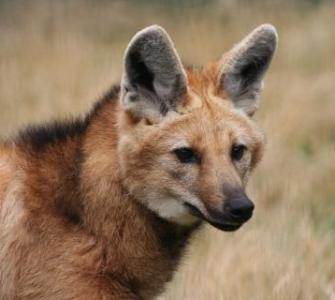Quantifying the economic benefits of Bolivia’s various ecosystems is a powerful way to demonstrate their importance to both decision makers and the general public.
Bolivia’s Chiquitano Dry Forests, located in the country’s lowlands east of the Andes, are part of the largest patch of healthy dry forest ecosystem today and one of the most biodiverse dry forests in the world. The forests are named after the indigenous caretakers of the land, the Chiquitanos. The region hosted much Jesuit missionary work during the 17th and 18th century, and has been honored as a place of “Outstanding Universal Value” by UNESCO.
Dry forests are the most endangered tropical forest in the world and the Chiquitano forest is under several threats due to recurring large-scale forest fires in the region in recent years, as well as increasing pressure from agricultural expansion- particularly in Santa Cruz Department which has exceptionally high rates of deforestation.
To help address these threats, Fundación Amigos de la Naturaleza (FAN) and Conservation Strategy Fund, with support from the World Bank, completed an economic valuation analysis of the environmental functions of Bolivia’s Chiquitano Dry Forests and the opportunity costs associated with alternative land uses. Using both a physical and economic analysis of the environmental function the forests provide to the department of Santa Cruz, our goal was to provide this technical information to the departmental government of Santa Cruz to better understand the economic activities in the area to inform better decision making.
The analysis included six environmental functions: water supply, carbon storage, pollination, fauna for local consumption, timber forest products, and non-timber forest products. It was estimated that one hectare of the Chiquitano Dry Forests can have a value of up to USD 3,000 when considering the net present values for a 20 year period. Some areas with the highest values within the ecoregion are at risk because of agricultural expansion.
Based on the economic values of environmental functions, some of the recommendations that can guide public policy to deal with the accelerated advance of the agricultural frontier in the ecoregion are: i) actions to protect areas with high values of environmental functions; ii) strengthening protection of conservation areas (national and sub-national protected areas); iii) promotion of the use of non-timber forest products; iv) support for sustainable timber products to achieve greater added values in rural communities; and v) promotion of sustainable agriculture practices in areas where agriculture is settled. We presented the results of our study several times to the regional government of Santa Cruz, who were very interested in and receptive to the conclusions and recommendations.
While the Chiquitano Dry Forests are considered globally outstanding for their many environmental functions, this ecoregion faces an uncertain future. Our hope is that providing an economic valuation of this region will build a strong case for the forests’ preservation in future decision-making by the local government.
This project was conducted in partnership with the Departmental Government of Santa Cruz. Support for this project was provided by the World Bank.
Photo: Chiquitano Dry Forests are home to the highest mammalian species richness of several biomes in the ecoregion. A few of the many vulnerable species are the giant armadillo, the endangered giant otter, and the near threatened maned wolf (pictured above).
Photo credit: Robert Elsmore/ Flickr

